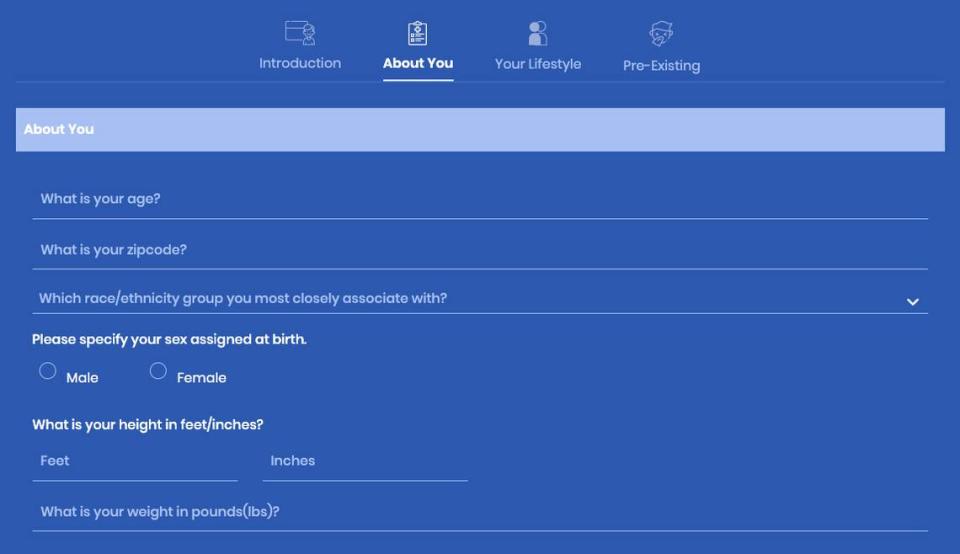What are your chances of dying from COVID? This calculator gives you a hint
Studies and statistics alike have shown that people over 65 and those with underlying health conditions face the highest risks of dying from COVID-19 compared to the rest of the population.
But what exactly are the odds of mortality for those individuals, as well as for everyone else who doesn’t fit in those categories?
Researchers at the Johns Hopkins Bloomberg School of Public Health developed an online calculator that can answer these questions. The tool, which is updated on a weekly basis, incorporates information on mortality risks and statistics from several data sets on the community and state level.
It’s designed to help an individual who is not currently infected with coronavirus to assess their chances of death based on their own risk factors and on community-level spread in their state.
What’s more, the researchers say their calculator could play a vital role in determining who should be prioritized for a vaccine by identifying people at high risk of dying from COVID-19, according to their study published Dec. 11 in the journal Nature Medicine.
The tool may be especially useful now that health care workers and nursing home residents in the U.S. are starting to receive their first doses of a vaccine this week, which will likely have limited supplies going into next year when the general population is expected to get theirs.
JUST NOW on @MSNBC: Critical care nurse Sandra Lindsay becomes the first in New York to receive the first dose of the COVID-19 vaccine pic.twitter.com/B6A7oIxmQu
— Michael Del Moro (@MikeDelMoro) December 14, 2020
“Although we have long known about factors associated with greater mortality, there has been limited effort to incorporate these factors into prevention strategies and forecasting models,” study senior author Nilanjan Chatterjee, Bloomberg Distinguished Professor of biostatistics and genetic epidemiology, said in a news release.
However, the researchers note their calculator does not account for all risk factors that might increase someone’s chances of dying from COVID-19, such as having an occupation tied to high exposure risks. These jobs include firefighters, grocery store employees or nurses, among others.
“An individual’s risk will also heavily depend on personal behavior such as social distancing, hand washing and mask-wearing,” the team wrote on its website. “It is also crucial to remember that individuals who themselves have a low risk of COVID-19 serious illness and/or mortality, they are still able to spread the infection to others who are at high-risk.”

The calculator was created with coronavirus data sets from several studies, including one large one from the U.K., and from Centers for Disease Control and Prevention state-level death rates data.
You start by entering your age, zip code, race and/or ethnicity group, sex assigned at birth, height, weight and smoking status. Then, you are asked if you have been diagnosed with conditions such as diabetes, asthma, cancer, hypertension or rheumatoid arthritis.
Your answer is your risk of dying from COVID-19 compared to the average risk for the U.S. population, which is color coded and labeled as “close to or lower than average risk, moderately elevated risk, substantially elevated risk, high risk, [or] very high risk.”
The tool also offers your mortality risk relative to pandemic projections in your state.
For example, a 35-year-old Black man living in Florida who is a smoker and has no underlying health conditions has 0.06 times the risk of dying from COVID-19 than the average U.S. adult, and is in the “lower than average” category.
Take the same man but fast forward 35 years, his risk of death is now 2.8 times higher than the average U.S. adult, and is in the “substantially elevated” risk category.
The researchers also found that about 30% of American deaths occur in only 1.6% of the population, suggesting “a large number of deaths could be prevented by targeting a relatively small number of high-risk individuals,” according to the release.
Males, Hispanic people, Black people and those with a history of obesity, diabetes, cancers, high blood pressure, stroke, kidney disease, arthritis, asthma and heart disease are more commonly found in high-risk groups, the study said, as well as people over 65.
“People may understand broadly that with a preexisting condition such as obesity or diabetes, for example, they are at higher risk, but with our calculator they should be able to understand their risk in a way that takes multiple factors into account,” Chatterjee said.

